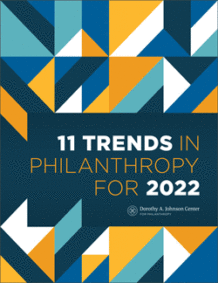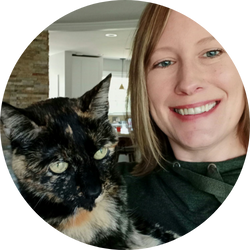One Health and Animal Protection Philanthropy: A Growing Sub-Sector


 This article was first published in our 11 Trends in Philanthropy for 2022 report. Explore all 11 trends in the full report.
This article was first published in our 11 Trends in Philanthropy for 2022 report. Explore all 11 trends in the full report.Humans and non-human animals intersect daily. As pets, tourist attractions, sources of food and labor, objects of human actions, and as their own affecters of ecological change, animals share our planet and our fate.
While still overwhelmingly human-centric, philanthropy has demonstrated increasing awareness of these intersections and consideration for the interests of animals and the environment1 over the past decade.
The numbers are still comparatively small, but convincing. In 2010, Giving USA noted that support for environmental and animal causes comprised only 2% ($6.15 billion) of total giving ($290.89 billion) to U.S. charities (2011). By 2020, that number had steadily increased to 3% ($16.14 billion out of $471.44 billion) (Giving USA, 2021).
“The growth in giving to environmental and animal organizations tripled that of human-centric recipient organizations from 2010 to 2020.”
This may appear to be a minuscule change, but presented differently (and adjusting for inflation) it is a 49.4% increase in this mission area’s share of the whole. The growth in giving to environmental and animal organizations tripled that of human-centric recipient organizations from 2010 to 2020 (Giving USA, 2011, 2021).
While it would be difficult and time-consuming to disaggregate the data for environmental versus animal-related causes at this stage, the overall growth in this sub-sector is further illustrated by an increase in attention, infrastructure, and tools.
There are millions of companion animals, billions of farmed land animals, and at least a trillion fish farmed annually worldwide (Clare, 2020). Despite their smaller numbers and generally far superior living conditions relative to factory-farmed animals (Anthis & Anthis, 2019), animal welfare funding has predominantly supported companion rather than farmed animals’ interests. However, research suggests that practice is shifting.
Animal Funding Atlas (2021) data show that in 2010, 186 grants were awarded for animal protection, totaling $11.39 million. The vast majority of these grants — 91%, for a total of $11.2 million — went to organizations and efforts focused on companion animals. Only a single identified grant for $5,000 was directed towards animals used for food. The remainder of the grants were designated for wildlife protection.
A decade later, the proportions have changed dramatically. In 2020, funders awarded 455 grants totaling $34.1 million for animal protection. While 68% of those grants went towards companion animals, they comprised only 19% of overall funding dollars. The 106 grants geared towards protecting animals used for food comprised 77% of funding (Animal Funding Atlas, 2021).
The size of the grants in this latter category (supporting animals used for food) is also astronomical in comparison to that single $5,000 grant a decade ago. The largest grants in 2020 include $4.1 million for the Humane League, $2.8 million for Mercy for Animals, and $2 million to Compassion in World Farming (Animal Funding Atlas, 2021).
The funder commitments overall are exponentially larger, too: $25.3 million from Open Philanthropy Project, $6.34 million from Maddie’s Fund, and $1.27 million from the Centre for Effective Altruism (Animal Funding Atlas, 2021).
By a different accounting, Andrew Rowan of Humane Society International (Kavate, 2020) “estimated funding for all farmed animal issues had grown from roughly $5 million to $50 million over the past 15 years” — a 900% increase.
Many philanthropic actors in this space are also making moves in the last few years to promote collaboration and collective impact.
In 2020, animal protection nonprofits and foundations — including the ASPCA, Maddie’s Fund, Summerlee Foundation, and Tigers in America — recognized a lack of tools for tracking animal protection grants, and banded together to address the gap. Together they created the Animal Funding Atlas, a tool to monitor opportunities for and the impact of animal protection philanthropy. Presently, over 50 grantmakers participate in the dashboard.
Other moves in the field include:
Animal protection philanthropy may also be growing due to increased recognition of the shared interests and health of humans.
Zoonotic diseases (illnesses that can spread between humans and animals) account for 60% of all infectious diseases in humans (Centers for Disease Control, 2019). In response to this and other shared health threats, including climate change, the CDC established the One Health Commission in 2009, a “collaborative, multisectoral, and transdisciplinary approach — working at the local, regional, national, and global levels — with the goal of achieving optimal health outcomes recognizing the interconnections between people, animals, plants, and their shared environment” (n.d., para. 1).
“Zoonotic diseases (illnesses that can spread between humans and animals) account for 60% of all infectious diseases in humans.”
In the decade since the commission’s inception, One Health has gained attention as a funding, evaluation, and educational approach. In 2018, Maddie’s Fund designated $500,000 to the University of Denver to evaluate the One Health impact of the Humane Society of the United States’ Pets for Life program in four communities, and $2.89 million to University of Tennessee’s One Health’s AlignCare program (Maddie’s Fund, 2021).
In 2020, American Pets Alive! — with support from Maddie’s Fund, Rachael Ray Foundation, PetSmart Charities, Pedigree Foundation, and others — began piloting a community-centered Human Animal Support Services model in 33 shelters to help keep pets in their homes. The model adopts a One Health approach by expanding access to services such as veterinary care, lost pet reunification, rent assistance, and short-term foster pet housing.
Additionally, in 2020, for the first time, an animal welfare group, Mercy for Animals India, and public health research institute, George Institute of Global Health, created the Centre for One Health Research to promote human and animal health in India.
The COVID-19 pandemic has understandably brought about increased attention to the principles of One Health. This is particularly true within our food systems, which account for about “50% of all zoonotic diseases that have emerged in humans,” contribute to climate change, and disproportionately negatively affect communities of color (Lurie, 2020, p. 19).
At convenings like the 2021 United Nation’s Global Food Systems Summit, and through publications such as Giving Smarter In The Age Of Covid-19: A Turning Point for Planetary Health from the Milken Institute Center for Strategic Philanthropy (Lurie, 2020), and Thriving Together: Achieving the Sustainable Development Goals and Increasing Well-Being for Animals and People from the International Fund for Animal Welfare (2018), this trend only appears to be gaining momentum.
_______________
1N.B. The Internal Revenue Service uses NTEE codes (National Taxonomy of Exempt Entities) to classify nonprofit organizations based on their mission areas. Candid and other grant aggregators also use NTEE codes to classify individual gifts/grants and provide a means of accounting. Because “Environment and Animals” is a joint NTEE code, it can be difficult to completely disaggregate philanthropic funding that has gone specifically to animals from funds aimed at the environment.

American Pets Alive!. (n.d.). Human animal support services. https://www.humananimalsupportservices.org
Animal Funding Atlas. (2021). (select focus areas for grant years). https://animalfundingatlas.org/#!/
Animal Grantmakers. (2021). Our history. https://animalgrantmakers.org/our-history
Anthis, K., & Anthis, J. (2019, February 21). Global farmed and factory farmed animals estimated. https://www.sentienceinstitute.org/global-animal-farming-estimates
Centers for Disease Control and Prevention. (n.d.) CDC’s One Health Office: Who we are. https://www.cdc.gov/onehealth/who-we-are/index.html
Centers for Disease Control and Prevention. (n.d.) One Health basics. https://www.cdc.gov/onehealth/basics/index.html
Centers for Disease Control and Prevention. (2019, May 6). 8 zoonotic diseases shared between animals and people of most concern in the U.S. https://www.cdc.gov/media/releases/2019/s0506-zoonotic-diseases-shared.html
Clare, S. (2020, November 2). Animal welfare cause report. Founders Pledge. https://founderspledge.com/stories/animal-welfare-cause-report
Encompass. (n.d.). Let’s create an equitable animal protection movement. https://encompassmovement.org
Giving USA. (2011). The annual report on philanthropy for the year 2010, a publication of Giving USA Foundation, researched and written by the Indiana University Lilly Family School of Philanthropy https://philanthropy.iupui.edu/files/file/lakeinstituteonfaithgiving-insightsaugust2010.pdf
Giving USA. (2021) The annual report on philanthropy for the year 2020, a publication of Giving USA Foundation, researched and written by the Indiana University Lilly Family School of Philanthropy https://store.givingusa.org/collections/home-page-2021/products/2021-. infographic?variant=39324695068751
International Fund for Animal Welfare. (2018, November 18). Thriving together: Achieving the Sustainable Development Goals and increasing well-being for animals and people. https://sdgfunders.org/search/lang/en/?s=animal
Kavate, M. (2020, September 9) Could philanthropy prevent the next pandemic by stopping zoonotic diseases? Inside Philanthropy. https://www.animalgrantmakers.org/resources/2020%20Conference/Inside-Philanthropy-Could-Philanthropy-Prevent-the-Next-Pandemic-by-Stopping-Zoonotic-Diseases.pdf
Lurie, M. (2020, September 1) A turning point for planetary health. Milken Institute. https://milkeninstitute.org/report/turning-point-planetary-health
Maddie’s Fund. (2021). Annual report 2020-2021. https://www.maddiesfund.org/assets/communications/maddies-annual-report2020-21.pdf
Mercy for Animals. (2020). Mercy for animals in India: 2020 year in review. https://mercyforanimals.in/blog/mercy-for-animals-india-2020-year-in-review/
One Health Commission. (n.d.). Why One Health. https://www.onehealthcommission.org/en/why_one_health/what_is_one_health/
Open Philanthropy. (n.d.). Farm animal welfare. https://www.openphilanthropy.org/focus/us-policy/farm-animal-welfare